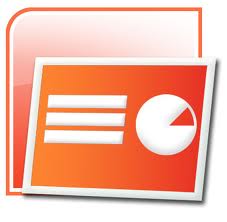The Nervous System
The nervous system is one that makes an appearance in every single unit of the entire course. The brain and peripheral nerves control and regulate each of the other body organs, in addition to receiving and interpreting all information from the senses.
Central and Peripheral Nervous System Lecture Powerpoint
 |
Purpose: Following an introduction on the process of neuron depolarization and repolarization, this lecture guides students through the anatomy of the human brain and spinal cord. After a quick look at some central nervous system disorders, such as Alzheimer's, students will also learn the order and function of the twelve cranial nerves.
Essential Concepts: Neuron, depolarization, repolarization, sodium potassium ATP pump, brain lobes, brain anatomy, central nervous system, peripheral nervous system, spinal cord, sympathetic nerves, parasympathetic nerves.
Central and Peripheral Nervous System Student Notes Outline
Purpose: Taking efficient notes can be a big challenge for many students, especially when working from a Powerpoint lecture. This outline gives students a means to take notes that guides them toward important concepts and avoids the pitfalls of writing word-for-word or simply not taking notes at all. The outline lays out each of the key concepts, ideas, and blank diagrams that students are expected to learn. They fill in the missing details as the lecture proceeds.
Essential Concepts: Neuron, depolarization, repolarization, sodium potassium ATP pump, brain lobes, brain anatomy, central nervous system, peripheral nervous system, spinal cord, sympathetic nerves, parasympathetic nerves.
Human Brain Anatomy Coloring Book
Purpose: This is a set of worksheets with large, line-art drawings of the human brain. Each is simple enough to allow students to color in each region of the brain as a way to practice learning the anatomy. Three views of the brain are shown, including the sagittal, lateral, and frontal plane. The workbook is designed for introductory level students. Assigned structures include the four lobes of the cerebrum, the parts of the diencephalon, and the brain stem.
Essential Concepts: Brain, frontal lobe, parietal lobe, occipital lobe, temporal lobe, cerebrum, diencephalon, pineal gland, thalamus, hypothalamus, lateral ventricle, medulla oblongata, pons, brain stem, gray matter, white matter, cortex.
Sheep Brain Dissection Lab
Purpose: This is a set of instructions with illustrated pictures for the dissection of the sheep brain. Students will learn about all of the external structures of the brain, including the dura mater, arachnoid mater, and pia mater, as well as the gyri and sulci before actually cutting the brain in half to explore the internal structures.
Essential Concepts: Brain, dura mater, arachnoid mater, pia mater, corpus callosum, transverse fissure, longitudinal fissure, gyrus, sulcus, frontal lobe, temporal lobe, parietal lobe, occipital lobe, medulla oblongata, pons, pituitary gland, optic chiasm, olfactory bulb, corpus callosum, thalamus, lateral ventricle, pineal gland, cerebellum.
Reaction Time Lab
Purpose: This lab tests students' reaction times by having them grab a ruler as quickly as possible once it is dropped. They will gain an appreciation for how quickly nerve impuses move by calculating their reaction time based on the distance the ruler falls and acceleration of gravity. They will compare their result to the class data, and graph everyone's data.
Essential Concepts: Nerve impulse, central nervous system, peripheral nervous system, somatic sensory receptors, afferent division, efferent division, somatic nervous system.
Nervous System Study Guide
Purpose: This study guide is a condensed listing of the major vocabulary words from this chapter, along with a set of practice questions and diagrams similar to what might be on a written test. The questions and vocabulary are roughly written in the same order as they appear in the lecture.
Essential Concepts: Neuron, depolarization, repolarization, sodium potassium ATP pump, brain lobes, brain anatomy, central nervous system, peripheral nervous system, spinal cord, sympathetic nerves, parasympathetic nerves.
